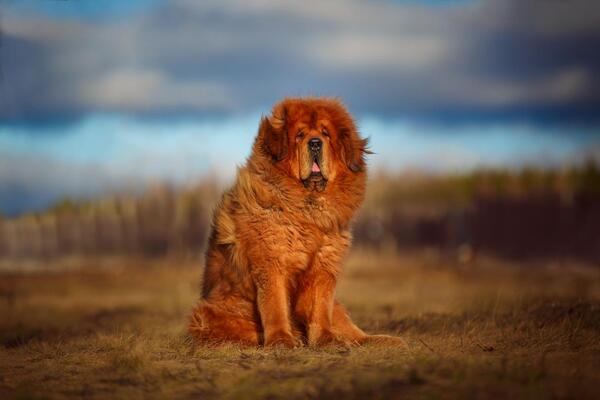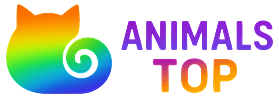As the circle of life comes to a close, many animals exhibit specific behaviors that may indicate an awareness of their impending death. While scientific understanding of this phenomenon is still developing, observations across various species suggest that animals may sense changes in their bodies or environment as they approach the end of their lives. In this article, we will explore the behaviors exhibited by different animals before death and discuss whether they seem to know that their time is running out.

Seeking Solitude:
Dogs and Cats: Many pets instinctively seek out a quiet, secluded place as they near death. This behavior is often seen as a way for them to find peace, away from the hustle and bustle of their environment.
Wild Animals: In the wild, animals like Elephants-Are-Endangered.html">elephants are known to wander away from their herd or family group as they approach death, seeking solitude in familiar, comfortable places.
Decreased Appetite:
Animals often stop eating as they near the end of their lives. This is particularly common in pets, such as cats and dogs, who may lose interest in food.
Wild animals, such as deer, may exhibit similar behavior, as they become lethargic and consume less food.
Changes in Behavior:
Dogs: Dogs may become more clingy, seeking comfort from their owners, or may become withdrawn and disinterested in activities they once enjoyed.
Horses: Some horses may become restless, pacing or showing signs of anxiety as they near death.
Vocalization:
Certain species, like cats and dogs, may vocalize more or behave unusually as they sense they are nearing the end. This could be a form of distress or a plea for comfort.
In the case of whales, some have been observed emitting distress calls when they are close to death.
Physical Signs:
Many animals exhibit clear physical signs of impending death, such as labored breathing, lethargy, or changes in posture. These signs can be seen in various species, including pets and wildlife.
Gathering Behavior:
Some social animals, like Elephants-Are-Endangered.html">elephants and wolves, may gather near a dying member of their group. This behavior suggests an instinctual understanding of death and the importance of companionship during this time.
Elephants: Elephants are known to show profound mourning behaviors. They often return to the bones of deceased companions and exhibit signs of distress. When sick, they may separate themselves from the herd.
Cats: Cats tend to seek solitude and may hide away when they are nearing death. They often exhibit a decreased appetite and spend more time sleeping.
Dogs: Dogs often become more affectionate or clingy as they sense their time is short. They may also display signs of anxiety or restlessness.
Whales: Whales have been observed to vocalize distress calls when they are close to death. Some species have been documented to beach themselves, possibly due to a desire to be near their family or to seek comfort.
Tigers: In captivity, tigers may stop eating and withdraw from social interactions as they approach death. They often seek quiet areas to rest.
While the extent to which animals can perceive their impending death remains a topic of research, numerous observations suggest that many species exhibit distinct behaviors as they near the end of their lives. Whether seeking solitude, showing changes in appetite, or vocalizing distress, these behaviors indicate a profound connection to their life cycle. Understanding these end-of-life behaviors not only fosters compassion towards animals but also deepens our appreciation of their emotional and social complexities.
animal tags: End-of-Life
We created this article in conjunction with AI technology, then made sure it was fact-checked and edited by a Animals Top editor.
you may also like

Dreaming about killing a snake can have many different symbolic meanings, depending on factors such as the situation in the dream, your personal cultural background and life experiences. Here are some possible explanations: 1. Overcome Difficulties: Dreaming about killing...

The term "niaoqiaoer" is not a standard Chinese word, but may be a term used in some dialects or local slang. According to online search results and some folk legends, there are several possible explanations:1. Niaoqiaoer refers to a mysterious, invisible bird. In some local legends, N...

In the animal kingdom, different species of milk contain different nutrients, and calcium is a very important mineral. Calcium is essential for maintaining bone health, tooth development, muscle function, and nerve conduction. Humans usually get calcium by drinking cow's milk, but in fact, many...

The Chinese zodiac signs are divided according to the year of birth, and each zodiac sign has a corresponding nickname. These elegant names are often related to ancient people's understanding and meaning of animals. Here are the nicknames for each zodiac sign: Rat: Also known as "ch...

If a pregnant female cat has fleas, you need to take action as soon as possible. Here are some suggestions for how to cope: 1. Go to the veterinarian for treatment: First, you need to take the female cat to the veterinarian for examination to ensure that the cat can use f...

Turtles have been part of human diets and cultural traditions for centuries. However, with growing concerns about biodiversity conservation, ethical consumption, and food safety, the question arises: Can turtles be eaten safely, legally, and sustainably?This article explores turtle consumption, incl...

Lake Baikal is one of the oldest, deepest and largest freshwater lakes in the world, located in Siberia, Russia. There are very rich biological resources and unique ecological environment here, and many of the animals are also very distinctive.Here are some of the animals commonly seen around or in...

The protagonist dog "Hachi" in the movie "Hachi" is a Japanese Akita dog. The Akita is a dog breed native to Japan and is known as one of Japan's national treasure dog breeds. Akita dogs are docile, loyal, highly alert and adaptable, and are widely used as guard and hunting d...
Email: jsset668#gmail.com (change # to @) Please indicate your purpose of visit! Guangdong ICP No. 2022053326 XML| map| Chinese

